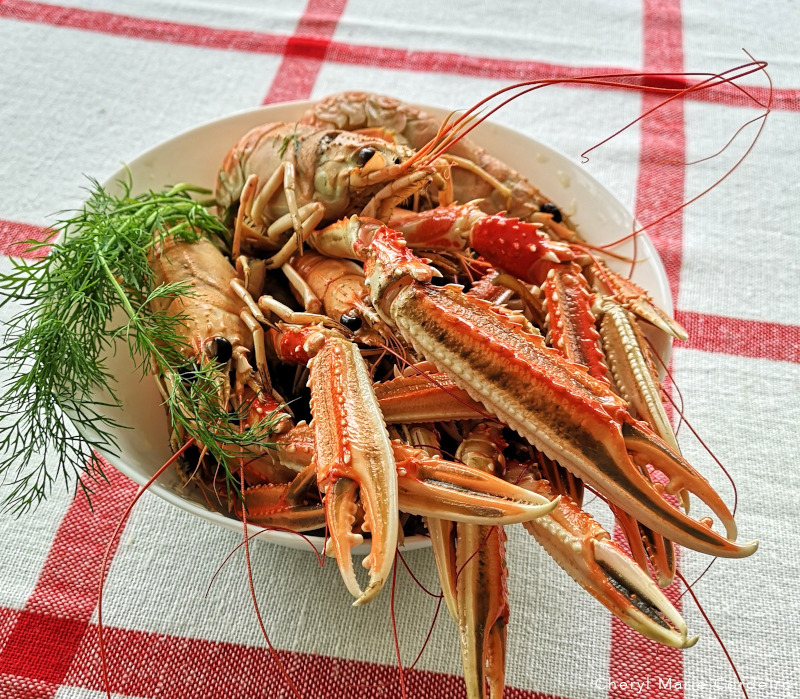Scampi (Nephrops norvegicus) is a stable population European crustacean that live primarily in the Nordic oceans. Differing from sweet water crayfishes, this crustacean is available all year round only depending on demand and weather. These scampi are KRAV-certified [1]. KRAV is a sustainability standard for the labelling of fish that has been farmed / harvested ecologically in Sweden.
Text & Photo © JE Nilsson & CM Cordeiro 2020
While food quality has always been a topic of discussion, food sustainability has in the past decades become a subject of increasing interest for consumers [2-4]. Consumers today are more educated on food ecology and the impact of food production on the environment and climate. They often inquire at the shops after product origin and methods of harvest / farming. They also want to know about plant (how much use of pesticides?) and animal (how humane were the animals treated?) welfare. In the Nordic countries, even prior to Covid-19 travel and trade restrictions, short food supply chains (SFSC) were in the early 2000s, being discussed and implemented as means to sustainable food consumption and food safety [5]. In Sweden, “närodlat” (regionally produced) and in Norway, “kortreist” are selling arguments that allow for agri-products and food services to command higher prices.
Scampi (Nephrops norvegicus) is the slim ‘supermodel’ version of a lobster, also known as Norway lobster, Dublin Bay prawn, langoustine or “true scampi”. The population in northern European oceans is stable, and not subject to over fishing. The challenge however are large industrial trawlers that are not KRAV certified, that also work too close to shore, potentially damaging the natural habitat of the scampi and bringing up juveniles through use of inappropriate harvest gear. Otherwise, the Nephrops norvegicus population seems stable and it is currently one of the more sustainable seafood species to consume from the ocean [6,7].
The Nordic countries celebrate the seasons by dining on foods in season. In Sweden the summer farewell is traditionally celebrated in August with a “crayfish party”. The crustacean that features in the Swedish crayfish party is a sweet water variety that resembles a small lobster with chubby claws. Commercially they are known as crawfish or mountain lobsters. It was the overfishing and the ambition to save the remaining population of Swedish sweet water crayfish that created the Swedish “crayfish parties” in August due to them being in their prime for catching. Today, sweet water crayfish or crawfish found in the Swedish grocery stores are imported from all over the world to cater to this tradition.
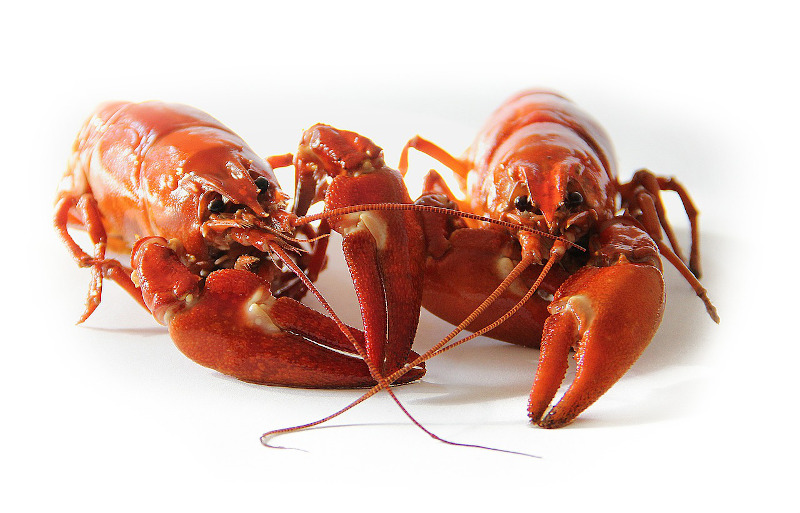
Crawfish. This picture shows the variety of sweet water crayfish that gave rise to the Swedish August crayfish parties. The parties were designated to be held in August due to a concern of overfishing some decades ago. Today, sweet water crayfish can be farmed, and are imported for consumption in the Swedish market. The Swedish local crawfish population has also stabilized in numbers.
During the Swedish summer, all types of crustaceans from shrimps to crawfish and scampi are popular foods. They are mostly sold pre-cooked and make festive dishes. This year a west coast Swedish founded fishing company called Burfiskarna (Creel Catchers) have started to sell their catch straight at the quay sides of all major islands in the Swedish west coast archipelago. The enterprise is run by the fishermen themselves, so I don’t think we could get much fresher produce than this. Burfiskarna specializes in sustainably captured, KRAV certified seafood. The KRAV Standard certifies responsible regenerative farming and harvesting, prioritizing biodiversity and welfare (animal and human) in the food supply chain.
In Sweden and in most Nordic countries, scampi are often served on top of white bread, with some lettuce, lemon and mayonnaise. Some white wine, or cold beer and schnapps are popular accompanying drink options. The upside of small-scale creel fishing for the fishermen is that creel capture produces better quality scampi. And quality pays [8,9]. The Nordic fisheries industry has a longterm sustainability, regenerative ocean harvest goal that has combined benefits towards a circular economy. This goal translates to higher quality and better tasting food for consumers, regenerative and sustainable capture fishing that preserves the marine environment, as well as increasing the quality of animal and species welfare. These efforts and measures will also not in the least, contribute to better quality living and higher product prices for fishermen and seafood producers.
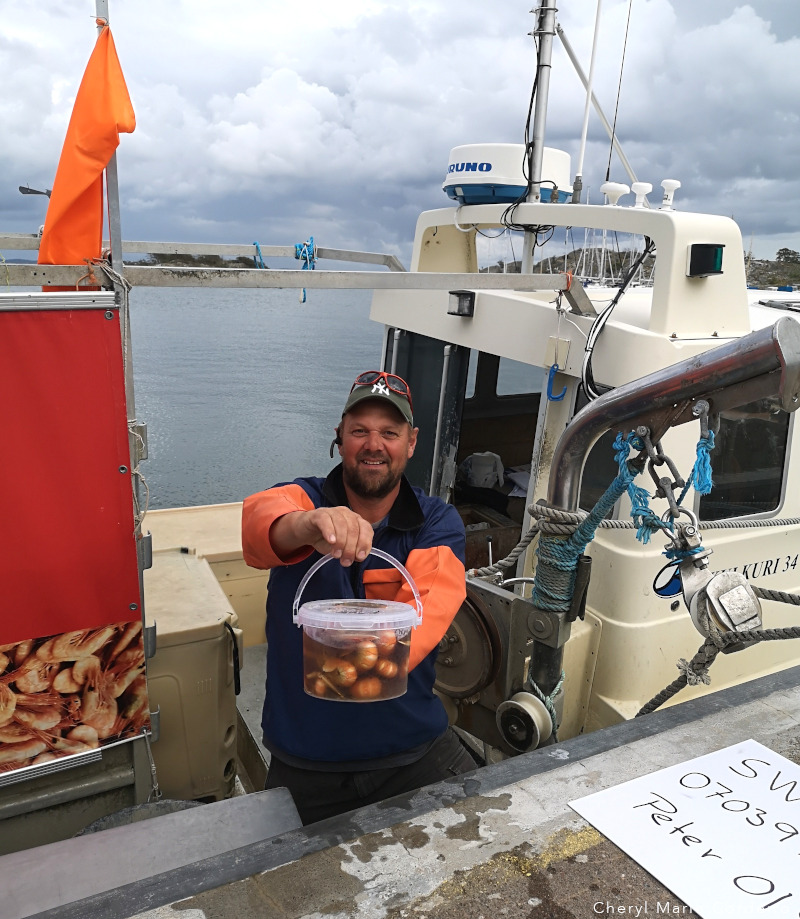
We bought our scampi / langoustines direct from our local seafood supplier, Burfiskarna Seafood, whose actual fishing boat docked at the quayside where we live.
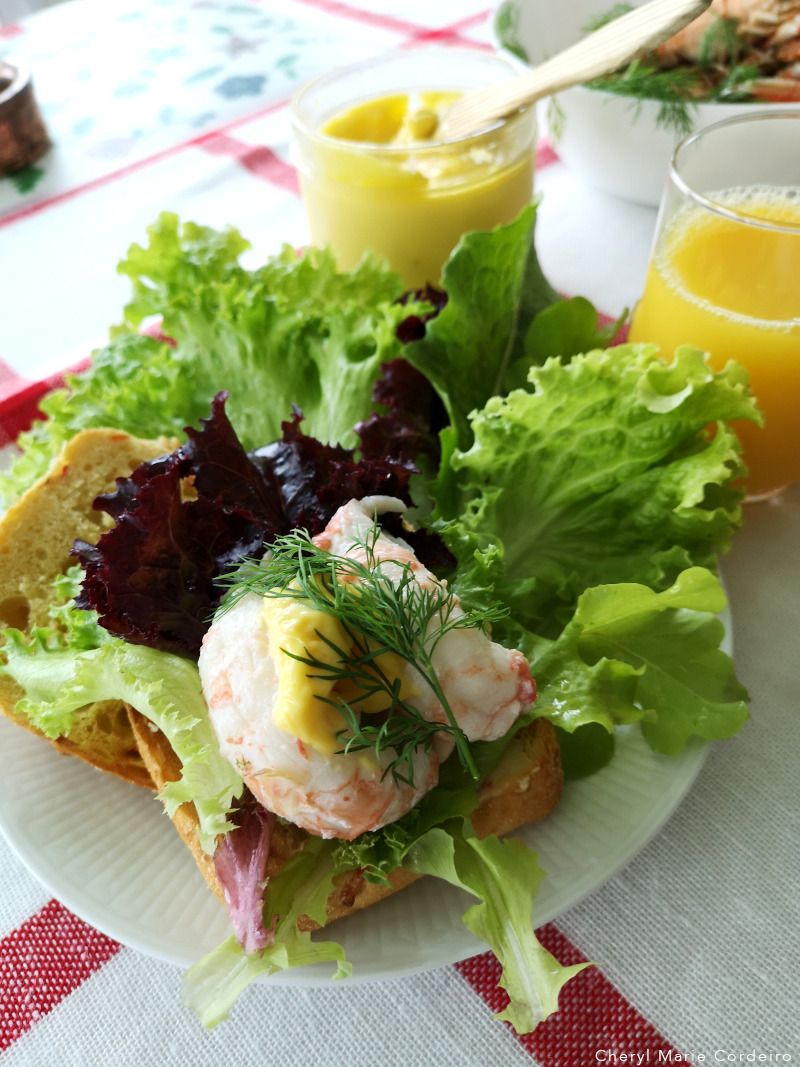
Scampi, peeled, on a bed of lettuce from the garden, and homemade mayonnaise.
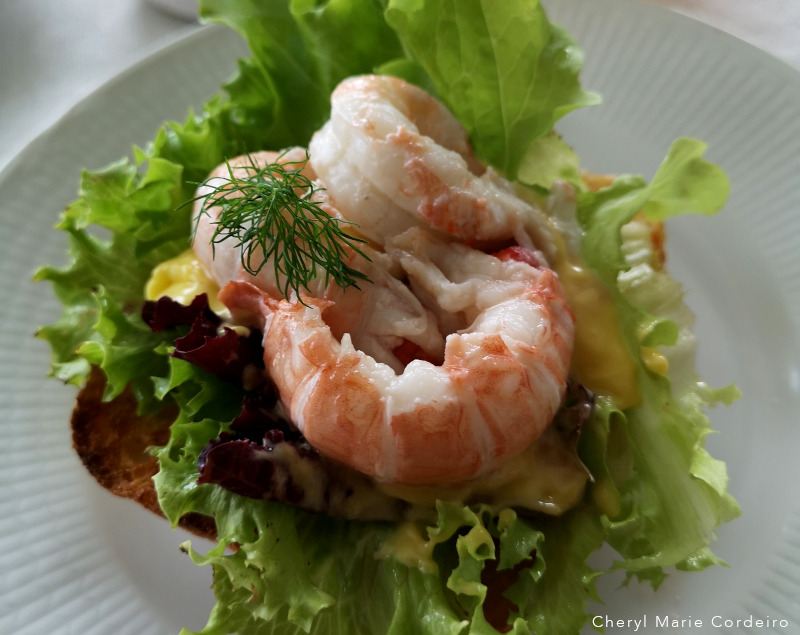
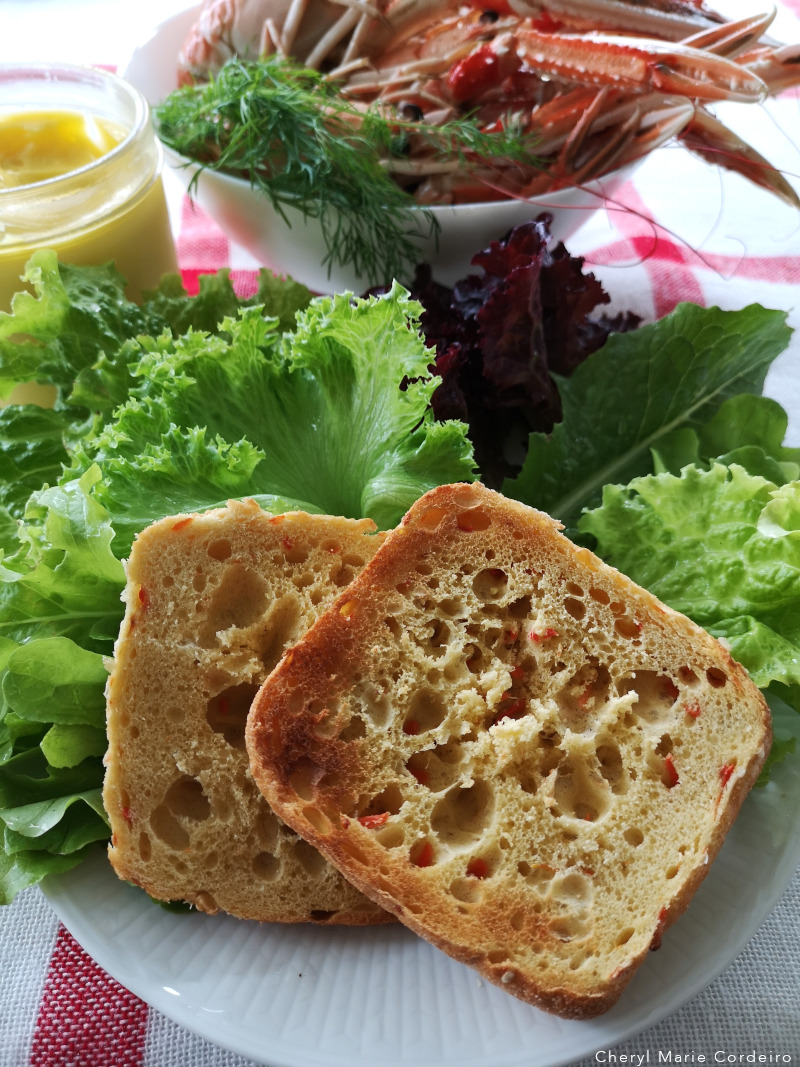
For bread, we used sunflower seed and carrot buns.
With the scampi meat set beautifully on buns and ready to be eaten, what could we do with the remaining crustacean shells? A favourite and almost obvious byproduct is to turn the remaining shells into a delicious stock to use for a variety of soups. The process is simple and involves stir frying the shells with some tomato paste and whatever you have of vegetables for some ten minutes. Simmer all ingredients in the pot for another ten minutes with some white wine and water, and that’s it. Even if used to fancy up a bag of ramen noodles, you’ve got great value for the money.
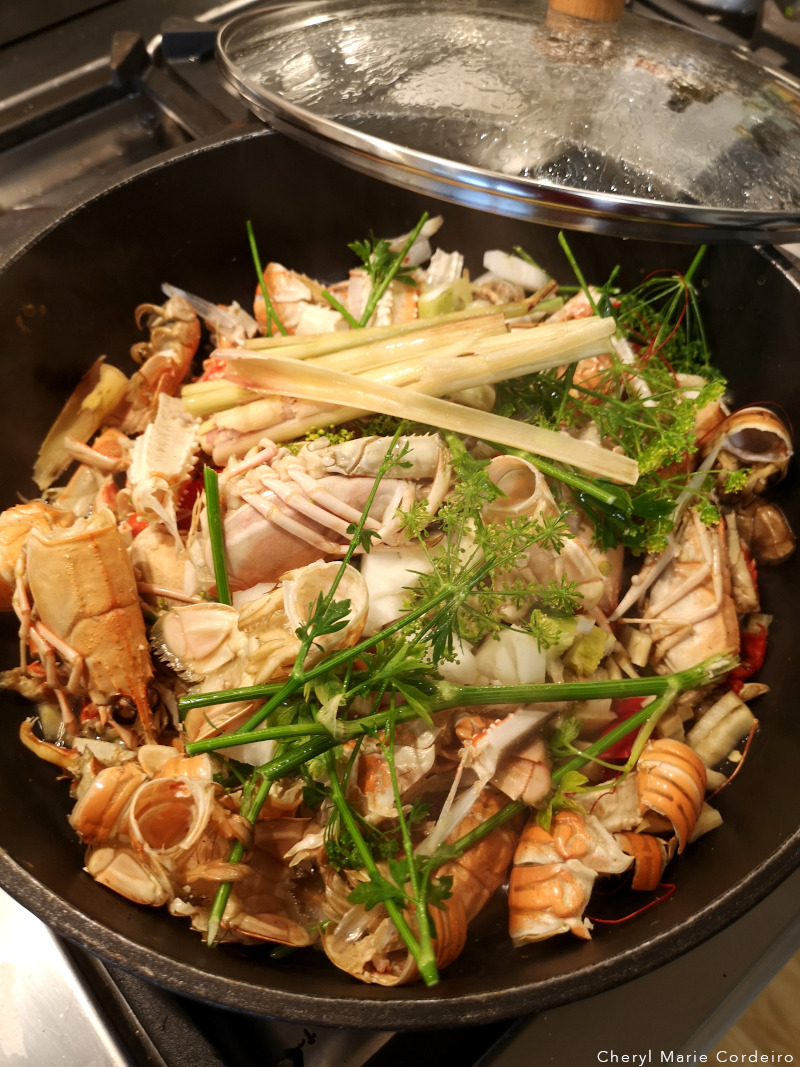
Scampi / langoustine bisque, with a Southeast-Asian flavour profile using lemon grass for aroma. The internet is full of recipes but for this version we used dill, lemon grass, red chillies, a fresh onion, celery, tomato paste. Ideally we would have tossed in a few carrots too, but they were unfortunately out (of stock).
References
[1] KRAV certification standard at https://www.krav.se/en/. Retrieved 5 July 2020.
[2] Czarnecki, J. (2012). Raising Awareness of the Origins of Product. Contract, 53(10), 10.
[3] Sogari, G., Pucci, T., Aquilani, B., & Zanni, L. (2017). Millennial Generation and Environmental Sustainability: The Role of Social Media in the Consumer Purchasing Behavior for Wine. Sustainability, 9(10), 1911.
[4] Buerke, A., Straatmann, T., Lin-Hi, N., & Müller, K. (2017). Consumer awareness and sustainability-focused value orientation as motivating factors of responsible consumer behavior. Review of Managerial Science, 11(4), 959-991.
[5] Lundberg, L. (2011). Närproducerade Livsmedel På Restauranger i Centrala Göteborg. http://hdl.handle.net/2077/24669
[6] FAO (2004). Information on fisheries management in the Kingdom of Sweden. FAO. Internet resource at http://www.fao.org/fi/oldsite/fcp/en/swe/body.htm. Retrieved 7 July 2020.
[7] Ziegler, F., & Valentinsson, D. (2008). Environmental life cycle assessment of Norway lobster (Nephrops norvegicus ) caught along the Swedish west coast by creels and conventional trawls—LCA methodology with case study. The International Journal of Life Cycle Assessment, 13(6), 487-497.
[8] Salladarré, F., Guillotreau, P., Debucquet, G., & Lazuech, G. (2018). Some Good Reasons for Buying Fish Exclusively From Community-Supported Fisheries: The Case of Yeu Island in France. Ecological Economics, 153, 172-180.
[9] Shi, H., Liu, Y., & Petruzzi, N. (2013). Consumer Heterogeneity, Product Quality, and Distribution Channels. Management Science, 59(5), 1162-1176.
